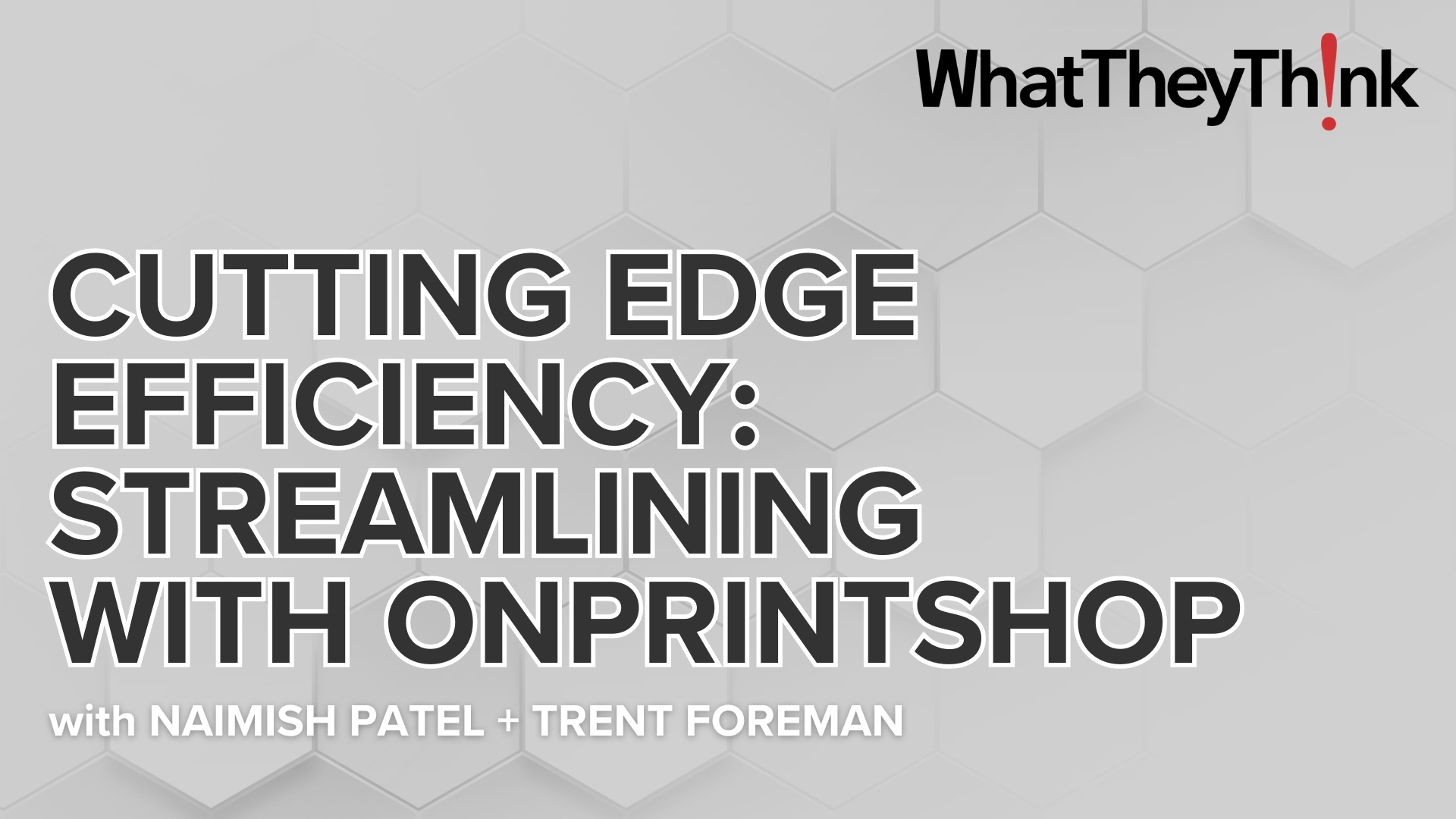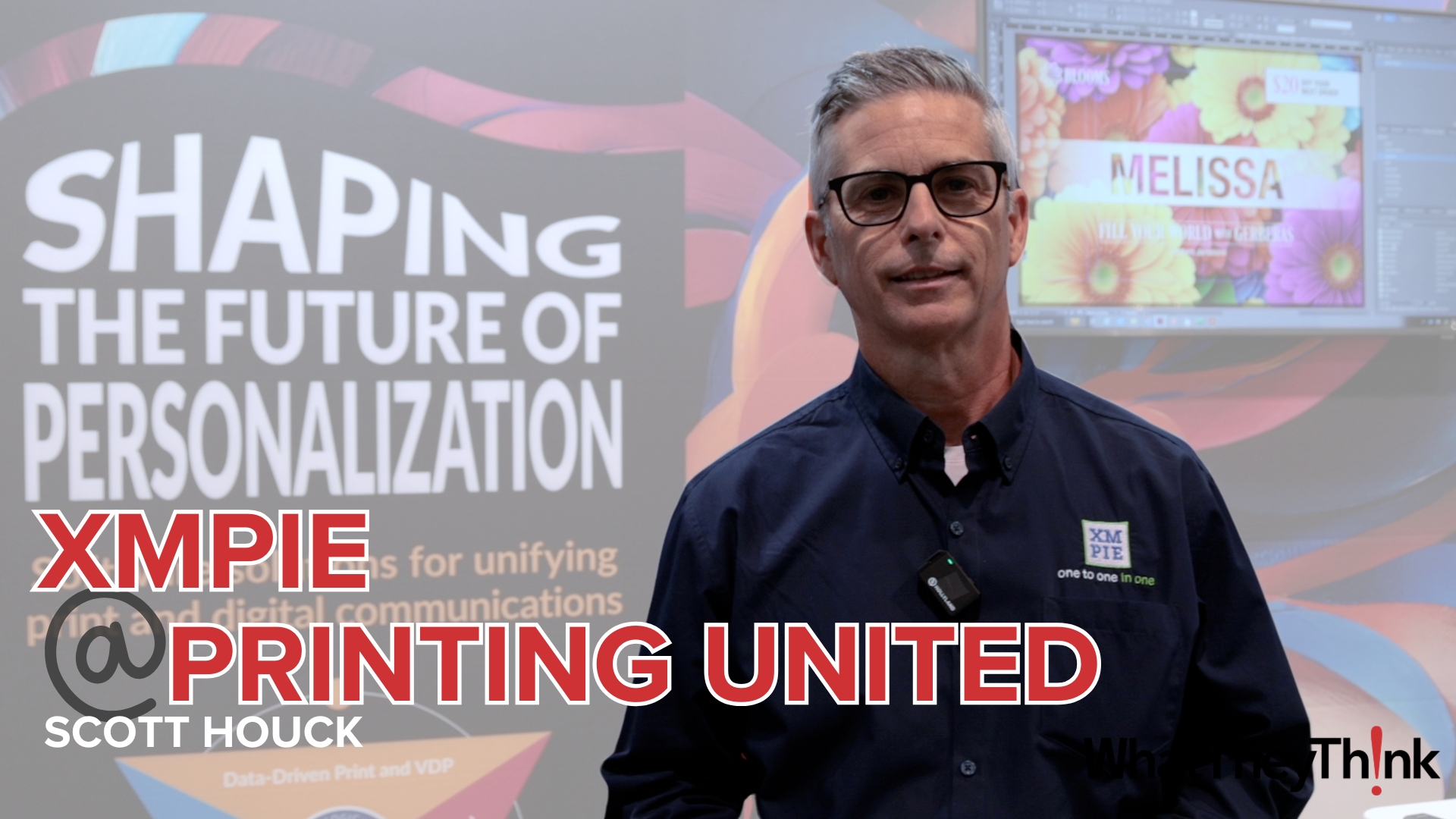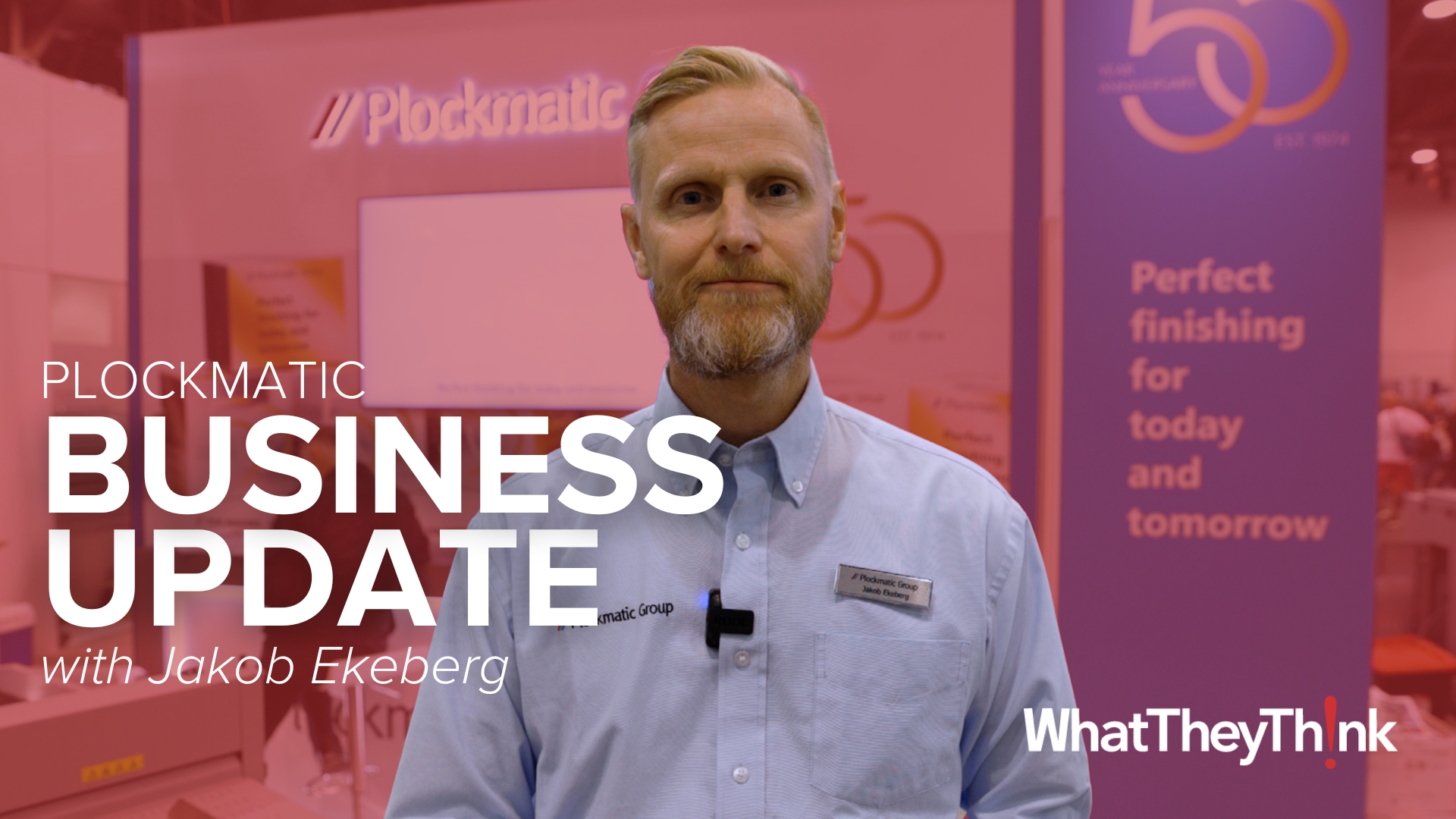Cimpress N.V., the world leader in mass customization and the parent company of Vistaprint and multiple other Internet printing brands, announced today that it is acquiring National Pen, an international leader in custom writing instruments. This acquisition supports Cimpress' strategy to build competitively differentiated supply chain capabilities that Cimpress makes available via its mass customization platform and brings to market with a portfolio of focused brands.
We spoke with Cimpress CEO Robert Keane to find out more.
WTT: Robert, the last time we spoke, you said, “When we don’t have a particular type of equipment, and someone else has made that investment, we can use them as a subcontractor across the mass customization platform. No one company can own all of the equipment.” Why acquire National Pen instead of leveraging them as a partner?
RK: It is true that we are actively increasing the number of third-party suppliers in our network. Today, there are several hundred firms we are buying from. Globally our purchases are worth well over $100 million in revenue to those fulfilment partners. But we also want to manufacture ourselves when we can do so via operations where we have unique competitive capabilities. That was one of the prime reasons we were interested in National Pen. They have incredibly efficient production operations that are quite specialized. Specifically, they have the ability to fulfill many orders of custom writing instruments, each order in very small quantities. Small business customers really value custom marketing materials to help them grow their businesses, but often are unable to afford them because of high minimum order quantities. National Pen’s focus is highly relevant to our customers because average order values range from $50 to a bit more than $100, depending upon the brand. Very few companies in the custom pen market come close to National Pen’s quality, product line breadth, international reach and cost competitiveness in quantities so small. We felt that the capabilities were so different that it made sense for us to invest in them. In the future, even as Cimpress will continue to increase the number of third-party partners we work with, we will also invest in internal capabilities when we find something we can do ourselves that is very unique in the market.
WTT: In looking at both Vistaprint and National Pen web sites, there seems to be quite a bit of overlap. In the press release, you said they were distinct yet complementary efforts. Can you explain?
RK: Many of the products National Pen sells, outside of pens, are outsourced. In fact, sometimes both Vistaprint and National Pen use the same fulfillers or promotional products suppliers. Our entire brand portfolio has overlap in third-party providers; and for the most part, we expect to continue to use those partners both for National Pen and for the other Cimpress brands. Some 90% of National Pen’s internal capabilities are around pens and similar types of products – writing instruments or small hard goods. We would expect to transfer our outsourcing to National Pen in that narrow product line specialty where they are so strong, but to continue with third parties beyond that.
Beyond procurement, we have other complementary areas. We think e-commerce is causing a secular shift of customer behavior in promotional products, moving from a primarily offline business to an online business model, so we see Cimpress’ ability to capitalize on the e-commerce opportunity as going beyond the benefits of the mass customization platform we are building. Cimpress has great e-commerce skills and proprietary technology for in-browser self-service graphic design for promotional products that National Pen can greatly benefit from. That type of complementary overlap illustrates that, even as our mass customization platform is an important way in which we hope to create value across our multiple business units, it is not the only way.
WTT: Can you give us an update on the progress on your Mass Customization Platform (MCP)?
RK: It is moving forward per our plans, functioning well for what has been deployed but still under construction, as it will be for several years. Our early focus has been on ensuring scalability, and in that regard we processed more than 100,000 unique items across the platform on our peak day in the past month, primarily for Vistaprint. But we are regularly processing more than 50,000 orders per day. The long-term vision of the platform is to sort incoming orders from many brands into homogenous streams of orders with very clean, preformatted, integrated workflow in terms of graphics preparation and prepress. That is because, in general, the more high-volume, specialized and repetitive any given production operation is, the more competitive it will be relative to traditional workflows.
National Pen will give us an exciting additional use case for MCP. Prior to this agreement with National Pen, we already sold custom pens, for which we produced and customized a narrow selection of models. If you compare that selection and our volumes to National Pen, we are many more times smaller for writing instruments. So in that category, their production capabilities are better, in terms of the quality of the product, the breadth of the product line, and, of course, per-unit cost. Just as for all our other products, for pens we want the platform to become a way for us to manage the volumes coming from our many different brands, sort them into homogenous streams that we direct to internal production lines or vend out to suppliers based on economic order quantities, quality, reliability, cost and other criteria.
WTT: So what would motivate you to acquire versus partner moving forward?
RK: We are more likely to acquire when we think there are unique-in-the-world capabilities and we think it helps deepen our competitive moat, be it on the production or the customer-facing side. For example, we believe no one has anywhere close to the cost position we have in terms of business cards on the Vistaprint production line. Likewise, we have two types of rubber stamps which we produce at Vistaprint in enormous volumes in a very automated way. The same is true at our European production sites which produce other types of products we do uniquely well in-house for which we have not been able to find third parties that are as good. The best production operations in this market are often deeply embedded into integrated businesses that have been built by going from the very front-end customer to the back-end processes, combining a specific marketing approach to optimize for a specific production capability. For example, National Pen has been around for decades with a very specialized direct marketing model, and it became successful because it owned the entire process, front to back. National Pen developed a unique-in-world capability for taking small orders of pens. It is that type of operation that we might seek to acquire in the future.
WTT: What value does Cimpress bring to National Pen, then?
RK: Other than in a small part of its business, National Pen has not historically been organized to sell products as a wholesaler. Buying National Pen enables us to grow its capabilities by selling them under our other brands, and we plan to leverage our platform to expand National Pen’s product line as well. We will also bring expertise in ecommerce. National Pen has a growth business, but generates only a small percent of its business through ecommerce. We think Cimpress can accelerate that ecommerce component to create value for customers and shareholders, and career opportunities for people at National Pen. If we didn’t own the business, we wouldn’t be able to do those things.
WTT: You indicated National Pen will continue as a brand.
RK: Yes. It will continue as a strong and growing autonomous brand, but its products will eventually be made available to Vistaprint and our European brands, just as our existing product portfolios will be available to National Pen. The general objective is to allow all Cimpress brands to grow by introducing more products their customers are interested in that previously have been unaffordable or unavailable to them.
WTT: The Cimpress companies obviously do a lot of printing, but I have heard you say before that you don’t consider yourselves to be a printing company. National Pen “prints” on pens. How do you see all of this fitting together strategically from your customers’ perspective?
RK: We don’t think of Cimpress as a printing business, you are right. Cimpress’ customized products are helping small businesses market themselves. For example, if you go to a law office and get a pen, they are giving you something that will help you remember them, complementary to their business card and their brochure. So it fits the front end of the Cimpress strategy. And because of our back end, it very much fits our mass customization focus. We see our target market as being small businesses that need to market themselves, and we employ mass customization as a way to cost-effectively serve that customer need. We certainly have a consumer business – holiday cards, photo books, etc. – but the vast majority of revenues are in brands used by small businesses or by resellers who sell to small businesses. Even when, in Europe, we serve local printers and graphic designers via our Exaprint and Tradeprint brands, our customers’ customers are small to medium businesses as well. As we introduce a broader, deeper product line into those brands, we are even better able to serve the core customer need.
WTT: So what’s your overall outlook as we prepare for 2017 and beyond?
RK: We have a really exciting decade in front of all of us. Some of the technologies we saw at drupa 2016 will continue to push the growth of this market for small volumes of customized products that we couldn’t produce before because of set-up costs. As color technology gets better, more and more beautiful products will be possible, and we think the industry will continue to grow.
Beyond the general technology tailwinds, at the core of Cimpress’ focus on mass customization is the ability to make it economical to procure high quality products in small unit quantities. If we don’t have capabilities in a certain area and someone wanted to fulfill that need as a supplier in our platform, we welcome that. Over the long term, we see an opportunity to create a unique-in-world network of fulfillers that benefits all partners. We have an initiative in beta, Cimpress Open, that is designed for that purpose. Coming back to National Pen, we likewise will make their product lines available not only through our own brands but also to third-parties through Cimpress Open, and we believe pens should be commercially available in six months to a year. Cimpress Open is in beta, but it will become an interface that enables people to purchase from us with very low friction, and it gets back to the sortation vision. For example, print service providers may want to get into promotional products, and by tapping into Cimpress Open and leveraging the networks’ fulfilment capabilities, they could do that. It could work the other way, too, where we look at them as a supplier for products our brands don’t produce. That translates into opportunity for this entire market and greater satisfaction for all of our customers.















Discussion
Only verified members can comment.